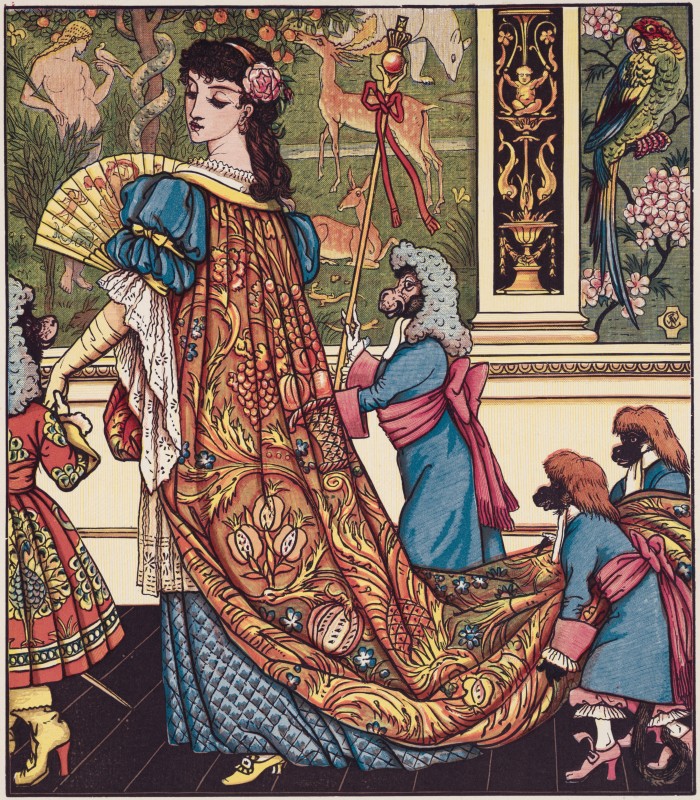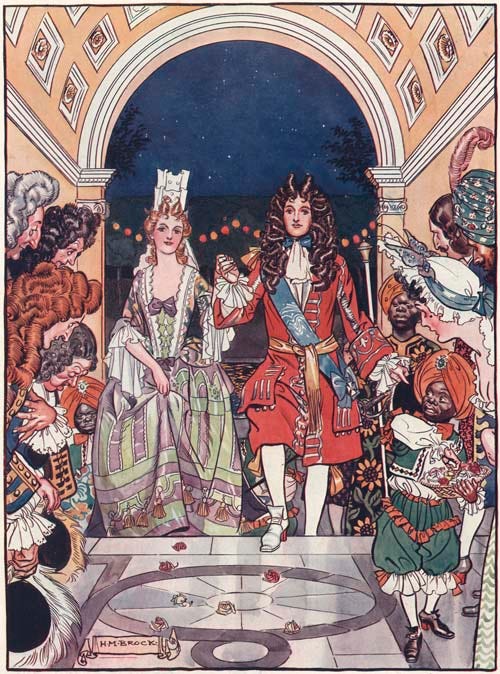 I got a few fairy tale treasures over the last month to share! First up, I received another book to add to my Beauty and the Beast collection, H. M. Brock's 1914 illustrated version. The copy I got has an introduction by Jerry Griswold, author of one of my favorite books on BATB.
I got a few fairy tale treasures over the last month to share! First up, I received another book to add to my Beauty and the Beast collection, H. M. Brock's 1914 illustrated version. The copy I got has an introduction by Jerry Griswold, author of one of my favorite books on BATB.The prose, adapted by an anonymous writer, follows the traditional French fairy tale pretty faithfully, but with a faster pace than either Beaumont or Villeneuve. One unique aspect I don't think I've read before was that when Beauty wishes herself back with her family, she uses the magic rose. Her sisters try to use the rose for themselves-only as soon as they wish on it, it withers. Beauty is dismayed to find the withered rose on the floor of her sister's room, but as soon as she picks it up, it blooms healthily again.
I wasn't familiar with H. M. Brock's illustrations before. They mimic Walter Crane's 1874 illustrations, but as Griswold discusses in the introduction, Brock has his own unique contributions.
Brock's emphasis, Griswold says (other than the luxurious, Cowardly-lion like locks of the Beast) is on the enchanted servants. Beauty's father is waited on by disembodied hands that seem to foreshadow Cocteau's row of candelabra sconces that appear to be disembodied human arms. Beauty's servants aren't as creepy; she gets monkey servants like in Crane (and in Villeneuve's "original" story).
Brock's Disembodied hands wait on Beauty's Father
Disembodied arms hold candelabras in Cocteau's 1946 film
Walter Crane's monkey servants in procession with Beauty
Brock's parallel monkey servant procession









This is beautiful! And I love Cocteau's film.
ReplyDeleteI see what you mean about the resemblance to Crane. Very beautiful! Thanks for sharing your new goody with us!
ReplyDelete